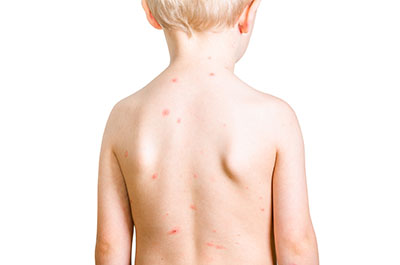Chicken Pox
 For all you parents who have yet to experience chickenpox, this post is for you.
For all you parents who have yet to experience chickenpox, this post is for you.
Everyone has heard of Chickenpox but yet it is still hard to determine if that is what is going on with your child. Chickenpox is a highly contagious illness that is common in children. It causes an itching skin rash with blisters. The disease is caused by the varicella-zoster virus and usually runs its course without problems.
Chickenpox in children usually starts with a slight fever and feeling unwell, sometimes with mild flu-like symptoms. A rash then appears in patches, usually behind the ears, under the arms, on the chest and stomach, and the arms and legs.
Patients often ask me how Chickenpox is spread between children. It is a viral infection that can be spread by direct contact with broken chickenpox blisters and by droplets in the air. People often think that their child is only infectious from the day they see the rash but in fact the infectious period starts about three days before the rash appears and lasts until all the blisters have formed scabs.
A child may not actually show symptoms for 10-20 days after being infected with the Chickenpox. The rash usually begins on the body and face and later spreads to the scalp and limbs and it is often itchy. When you first notice the rash you will probably see small red spots which develop into blisters in a couple of hours.
Your child may also have a high temperature as their body fights off the virus. You can usually treat the child at home but if you see the rash spread to inside the mouth or to the genitals then further advice should be gotten in your pharmacy or GPs. Chickenpox in children usually last 7-10 days but can last longer in adults.
Chickenpox is rare but usually much more serious in adults. You may have a high temperature, aches and pains and a headache a day or so before the rash appears.
Once you’ve had chickenpox you develop lifelong immunity to it. It’s rare to catch chickenpox again occasionally some people with a weak immune system may have a very mild re-infection (often without any symptoms).
While Chickenpox is usually self-limiting, it may be necessary to bring your child to the pharmacy or GP if their fever lasts longer than 4 days, they have trouble breathing, a severe headache or if they have any difficulty walking or they are vomiting. The sores can become infected and then would need antibiotic treatment.
However all this is of little comfort to parents who are trying to deal with a very upset and uncomfortable child. Call into your local pharmacy and get some advice to make the next week more bearable for you all. You may find that using Calamine lotion on the rash will help calm it down. Sometimes I find using Calamine from the fridge can give greater relief.
There is also a lotion called Eurax which contains an anti-itch ingredient called Crotamiton which can be used in children older than 3 years of age. Your child will probably have a temperature or pain so giving Calpol or other Paracetamol medications will also help.

